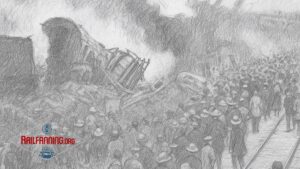When the Circus Train Met Disaster: The 1918 Ivanhoe Collision
On a warm June night in 1918, the sleepy community of Ivanhoe, Indiana, was the backdrop of one of the ...
[su_icon_panel icon=”icon: train” icon_size=”50″ icon_color=”#295c7d” url=”https://railfanning.org/directory/”]Directory of Historic Railroads[/su_icon_panel]
[su_icon_panel icon=”icon: community” icon_size=”50″ icon_color=”#295c7d” url=”https://railfanning.org/people/”]Key Figures in Railroad History[/su_icon_panel]
[su_icon_panel icon=”icon: medkit” icon_size=”50″ icon_color=”#295c7d” url=”https://railfanning.org/wrecks/”]Wrecks and Mishaps[/su_icon_panel]
[su_icon_panel icon=”icon: book” icon_size=”50″ icon_color=”#295c7d” url=”https://railfanning.org/encyclopedia/”]Railfanning Encyclopedia[/su_icon_panel]
The earliest railroads looked little like their modern ancestors. Beyond the rails and wheels on cars, they had little in common. They couldn’t haul the huge loads that today’s railroads can and their mode of power was either man or animal, usually horse or ox.
The earliest ancestors of modern-day railroads date back to the Roman Empire. It was during that period that stone tracks were used with wagons.


